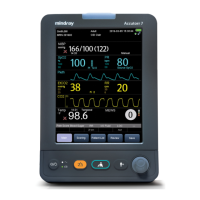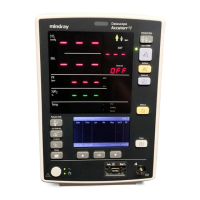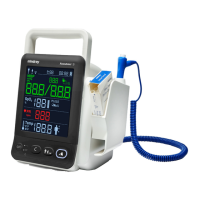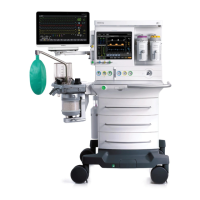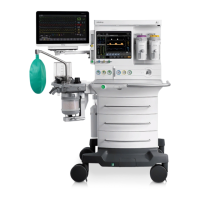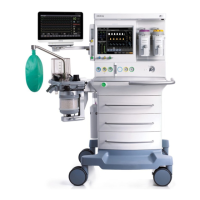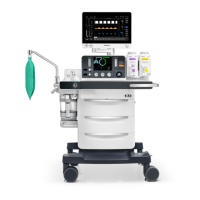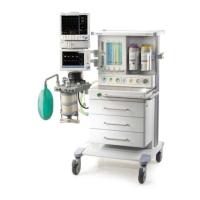SpO
2
Measurements (Accutorr Plus advanced models) Operation
3 - 18 0070-10-0692-02 Accutorr Plus™ Operating Instructions
3.10 SpO
2
Measurements (Accutorr Plus advanced
models)
To obtain SpO
2
measurements and SpO
2
Heart Rate from the Accutorr Plus advanced
models, see section 3.10.2 for units with Nellcor SpO
2
, and section 3.10.3 for units with
Masimo SpO
2
.
CAUTION: Do not place the sensor on an extremity with an invasive
catheter or blood pressure cuff in place.
CAUTION: A pulse oximeter should not be used as an apnea monitor.
CAUTION: A pulse oximeter should be considered an early warning
device. As a trend towards patient deoxygenation is
indicated, blood samples should be analyzed by a
laboratory co-oximeter to completely understand the
patient’s condition.
CAUTION: Ensure proper routing of the patient cable to avoid
entanglement and/or strangulation.
NOTE: In the event you are unable to obtain a reading, or the
reading is inaccurate, check the patients vital signs by
alternate means and consider the following:
• If your patient is poorly perfused, try applying the sensor to another
site (i.e. a different finger or toe).
• Check that the sensor is properly aligned.
• In electrosurgery, make sure the sensor is not too close to ESU
devices or cables.
• Check to make sure the site area is clean / non-greasy. Clean the site
and sensor if needed. Nail polish and fungus should be removed.
3.10.1 Pulse Oximetry Sensors
A. Sensor Selection and Application
Selection of a specific sensor is based on the patient’s size, physical condition, and expected
monitoring duration. Instructions for the application of a sensor to a patient are provided in
each sensor package. For optimal placement, ensure that cable side is placed in the correct
position see FIGURE 3-5 and FIGURE 3-6).
B. Sensor Connection to the Accutorr Plus advanced model:
FIGURE 3-5 Typical reusable sensor
placement
FIGURE 3-6 Typical flexible sensor
placement
Cable on Top
Cable on Bottom
